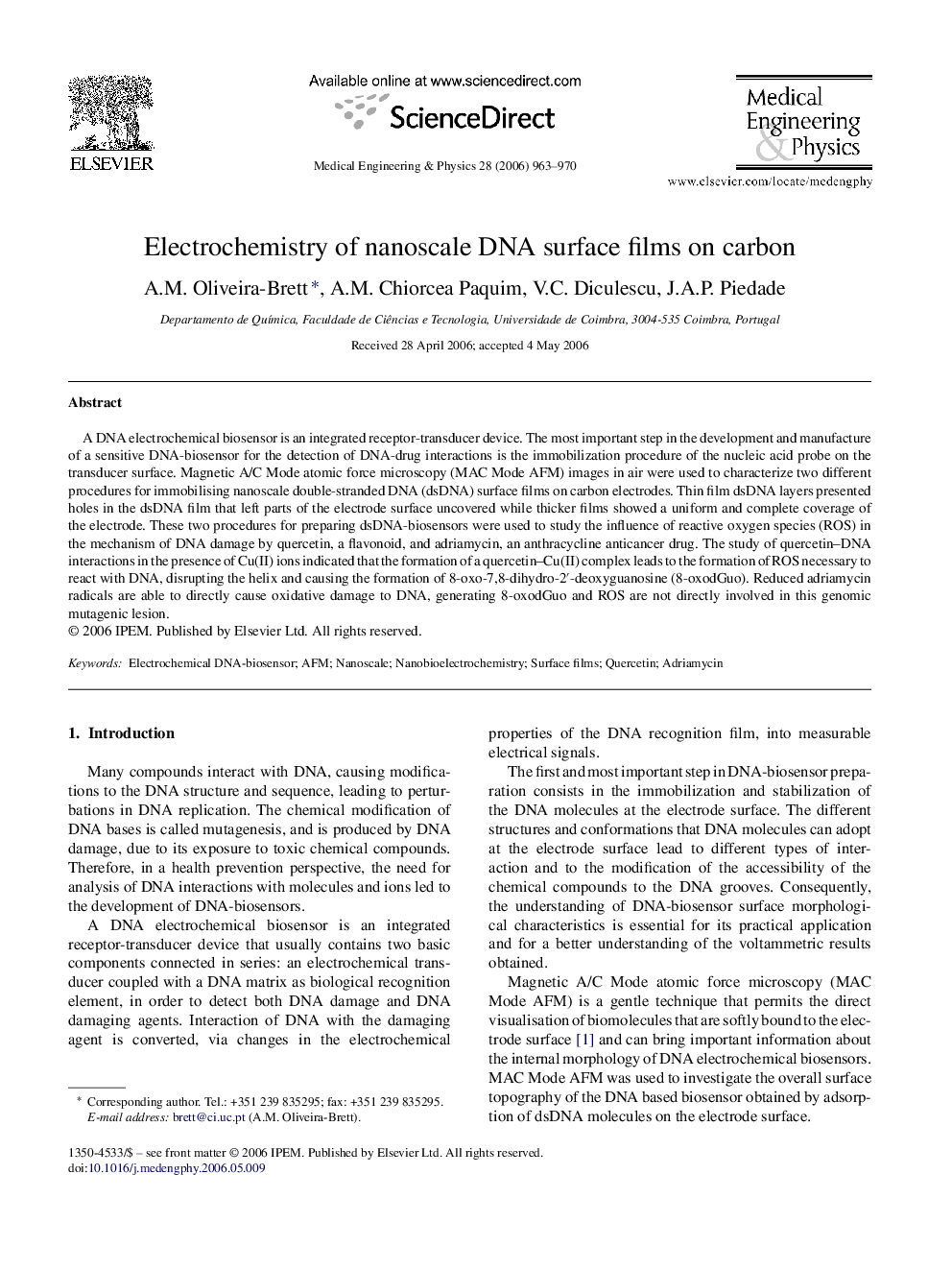| کد مقاله | کد نشریه | سال انتشار | مقاله انگلیسی | نسخه تمام متن |
|---|---|---|---|---|
| 877231 | 910903 | 2006 | 8 صفحه PDF | دانلود رایگان |

A DNA electrochemical biosensor is an integrated receptor-transducer device. The most important step in the development and manufacture of a sensitive DNA-biosensor for the detection of DNA-drug interactions is the immobilization procedure of the nucleic acid probe on the transducer surface. Magnetic A/C Mode atomic force microscopy (MAC Mode AFM) images in air were used to characterize two different procedures for immobilising nanoscale double-stranded DNA (dsDNA) surface films on carbon electrodes. Thin film dsDNA layers presented holes in the dsDNA film that left parts of the electrode surface uncovered while thicker films showed a uniform and complete coverage of the electrode. These two procedures for preparing dsDNA-biosensors were used to study the influence of reactive oxygen species (ROS) in the mechanism of DNA damage by quercetin, a flavonoid, and adriamycin, an anthracycline anticancer drug. The study of quercetin–DNA interactions in the presence of Cu(II) ions indicated that the formation of a quercetin–Cu(II) complex leads to the formation of ROS necessary to react with DNA, disrupting the helix and causing the formation of 8-oxo-7,8-dihydro-2′-deoxyguanosine (8-oxodGuo). Reduced adriamycin radicals are able to directly cause oxidative damage to DNA, generating 8-oxodGuo and ROS are not directly involved in this genomic mutagenic lesion.
Journal: Medical Engineering & Physics - Volume 28, Issue 10, December 2006, Pages 963–970